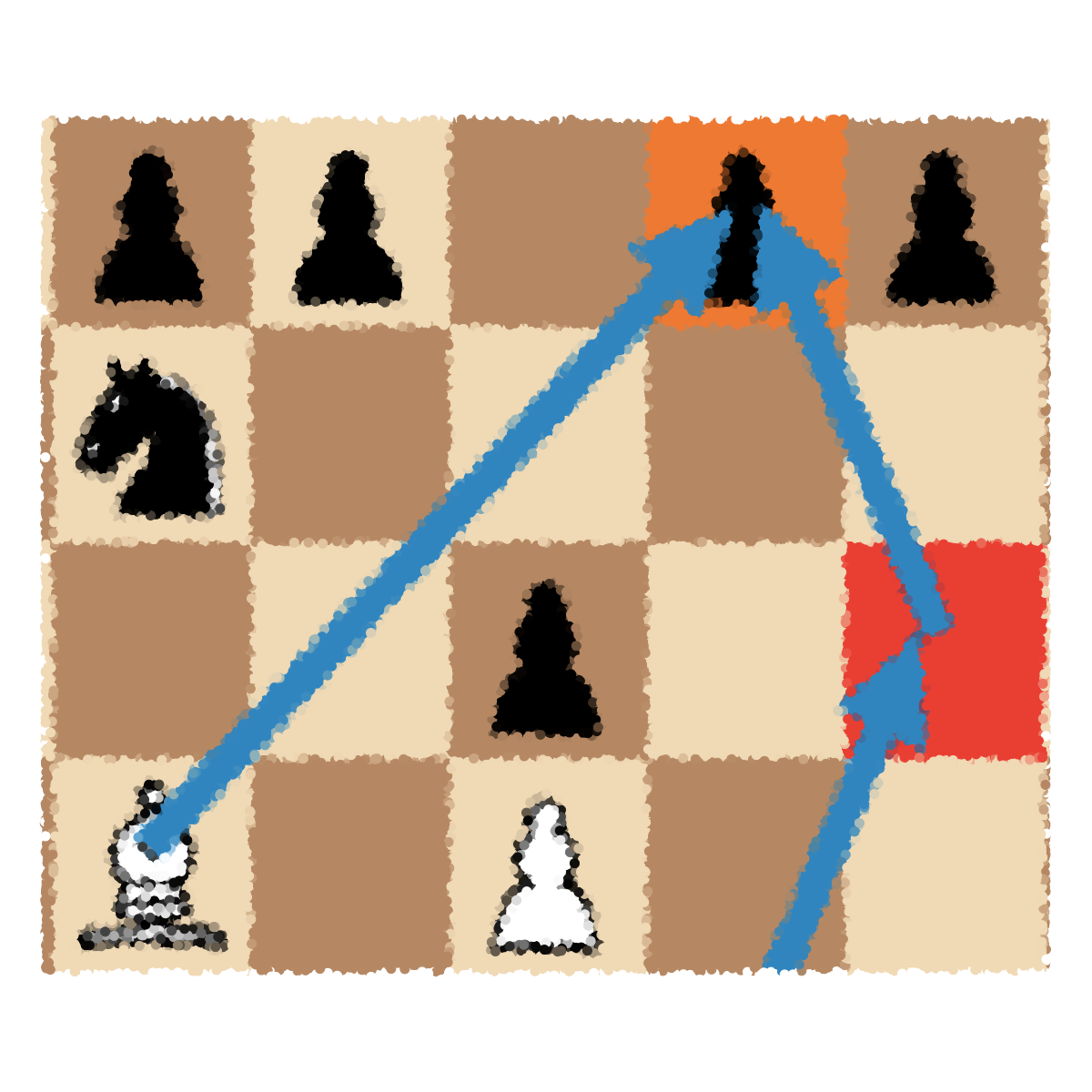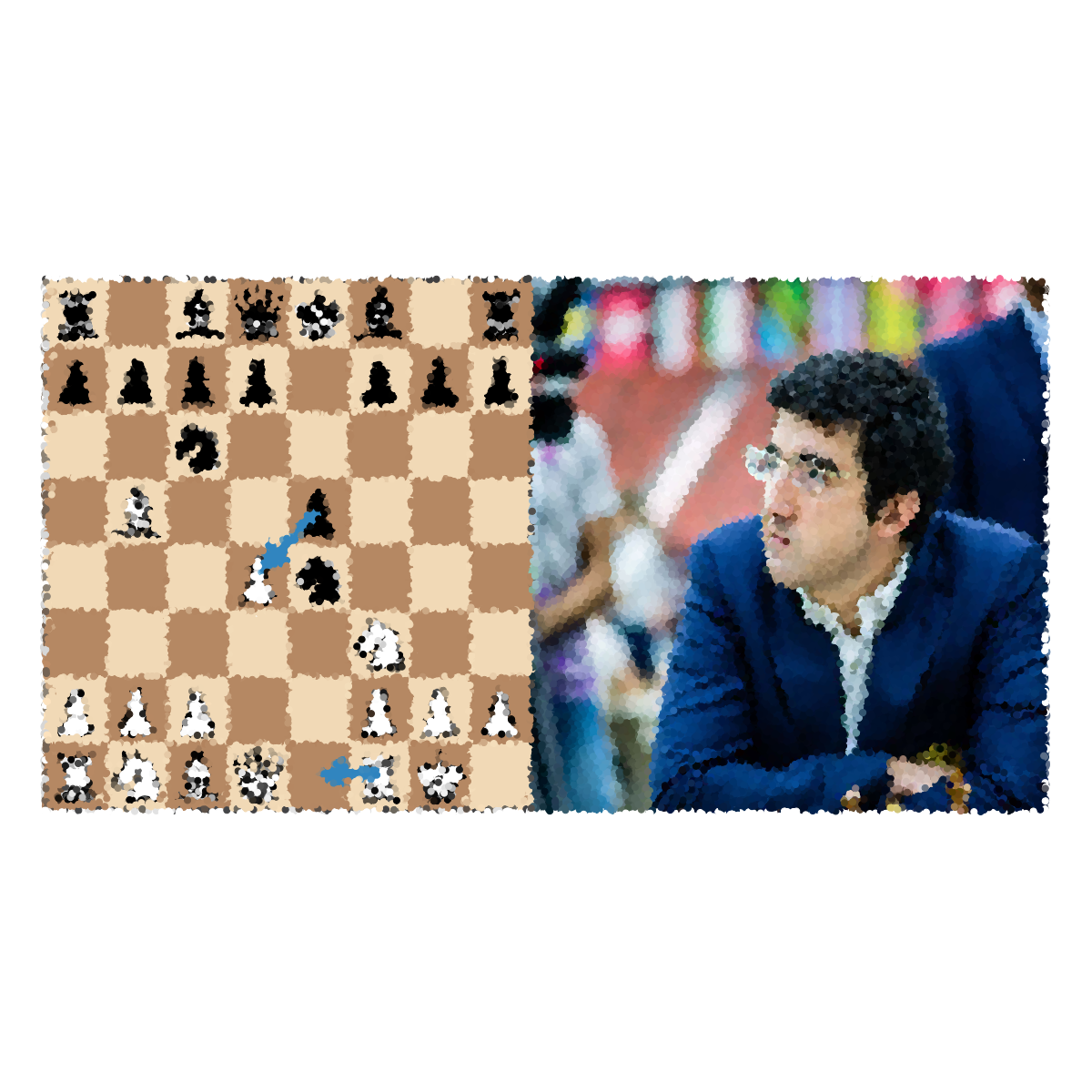The opening we are going to study is so sharp that it was the favorite opening in the romantic era (before 1900), giving us some unforgettable games. At that time, players were looking for the attack almost at any cost, and thus playing very aggressive openings: the King’s gambit was at its peak. Then, the game of Chess evolved and players learnt to defend better against this opening and the success of the King’s gambit faded away.
Still, the attacking player can find in the King’s gambit many sharp, attacking lines that can confuse almost any player with Black. That is why the King’s gambit remains an excellent practical choice.
The purpose of this article is to give you an overview of the various lines . As for the other articles on openings, my goal is to give you an overall understanding on the opening rather than a comprehensive knowledge on every line. Just remember that other moves are possible.
To start with this opening, let’s check the main dynamics of the King’s gambit together.
Anyway, in general, Black’s plan is to defend against White’s attack to try to get the advantage at the end of the opening. We have seen the main ideas, now let’s see the main lines. First, we will see what can happen if Black accepts the sacrifice and captures on f4.
Black accepts the King’s Gambit
3… g5: Classical Line
This is historically the most popular line of the King’s gambit when the opening was at its peak. Thus it deserves a specific attention as it contains dozens of interesting (and sometime dubious !) gambits. We are only going to show the two main ones for now, leaving the other ones for more specific articles than this one.
The Kieseritzky Gambit
On top of that, the King’s gambit is an opening where strategic principles do not matter as much as concrete tactical lines, that is why each move should be considered from a tactical point of view first.
The Muzio Gambit
If you found the Kieseritzky Gambit too mild (!), the Muzio Gambit may be more suited to your style. If we are completely honest with ourselves, this line is probably dubious for White. However, it places Black under a considerable amount of pressure, with many chances to go wrong.
In the resulting position, White is pushing hard to attack f7, but the amount of material invested to reach this position favors Black.
This is only the start of the line. Needless to say, having to find the right defending moves on the board is a very difficult task for Black from a practical standpoint.
3… d6: Fischer Defense
This defense, although known before Bobby Fischer, has been advocated by the World Chess Champion. Indeed, he wanted to make the point that the King’s gambit “loses by force”, and thus searched the best move to counter it !
Evaluating the previous position is hard: most articles assess it as “unclear”. Thus White can choose a different type of play, without the move h2-h4, and here as well the game is quite balanced:
Thus, Black cannot really play g7-g5 after Bc4, and the game usually continues like this:
All these lines teach us that the King’s gambit is a tricky opening: wild tactical lines are everywhere and any wrong move on any side of the board can lose the game instantly !
3… Be7: The Cunningham Defense
In this line, Black wants to prevent White from castling.
From there, the game can develop quietly: there is no attack for Black, but White still has to justify the pawn sacrifice !
White does not play 3. Nf3
The main alternative to 3. Nf3 is 3. Bc4, the Bishop’s gambit. The main idea is that, like in the Cunningham’s defense, White is not afraid to move the King to f1, as it is a good and safe square for the King.
Thus Black has other ways to play against this system.
And finally, Black has another, more direct option, also involving the move d7-d5.
I wanted to show you this idea of an early d7-d5 combined with Ng8-f6 next: first because this is a way for Black to give back the pawn in exchange of a good activity and development.
Second, because this idea is also found in another main line of the King’s Gambit we are going to study now: the Falkbeer Countergambit.
Black does not accept the gambit
2… d5: The Falkbeer Countergambit: Fighting The King’s Gambit With Fire
Instead of accepting the pawn offered by White, Black declines it and offers another pawn instead: this bold choice is the start of the Falkbeer Countergambit !
The move 2… d5 also asks the question of Black’s e5-pawn. Can White capture it ?
For this reason, White’s third move is almost forced: White has to capture on d5, and not e5 !
2… Bc5: the Classical Defense
This line is the last one we will present in this article. It is not a critical line and usually White gets a comfortable position out of the opening. That is why it is not as popular as accepting the gambit.
One important piece of advice: do not play 2… Bc5 hoping for the blunder 3. fxe5?? . Indeed, anyone playing the King’s Gambit with White is normally aware of this trap. Do play it if you feel comfortable with the resulting position, but keep in mind that White has an easier game.
Final Thoughts and Conclusion On The King’s Gambit
We have seen many lines of the King’s Gambit, that used to be the most popular opening in Chess, thanks to its sharp lines. All in all, many possibilities for both sides to force a line in which you are comfortable, but also, many tactical threats to be aware of. Certainly a unique opening !
To finish with, a small quiz about another option for White on the third move, that should be easy for you if you have read this article carefully.
White should not play d2-d4. Here is why.
This is the King’s gambit: many possibilities to attack, but also a lot of traps and a sharp tactical game. This is one of the few openings where we can say that any little mistake can cost the game ! A very good choice of opening for those who are not afraid of complexity.
If you like the King’s gambit, you might be interested as well by similar sharp openings: the Vienna gambit, the Blackmar-Diemer gambit, the Smith-Morra gambit or the Wing gambit. With Black, the Budapest gambit and the two Knights defense may interest you. The truth is, there are many sharp lines playable and I only mentioned a subset of them.
Now, go try all these lines in your games and tell me how it went 🙂 !



